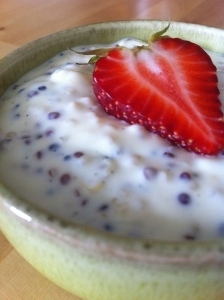The Perfect Afternoon Snack (for Adults)
/It’s not just kids who need snacks. We adults need them too. Today I'm sharing the perfect afternoon snack for us adults. Why? It takes approximately four hours to digest food and start getting hungry again. Planning a healthy snack between lunch and dinner can prevent that late afternoon hungry-angry feeling (commonly called ‘hangry’). ‘Hangry’ is created by low blood sugar. Your low blood sugar will also cause you to search out (i.e. crave) sugary, fatty, salty foods. It’s a natural reaction, not a lack of will power.
The secret to healthy eating is prevention. Prevent becoming ‘hangry’ (and heading straight to the convenience store for processed foods) by planning a healthy snack before you get to that point.
So what’s the perfect snack? In truth, there isn’t just one perfect snack – one size doesn’t fit all when it comes to nutrition. Here are the elements of three styles of snacks. One of which will likely be the perfect fit for you.
The Perfect Snack Option 1: Just Produce
This is best if you have a relatively short time between lunch and dinner. Or, if you are very sedentary and don’t need any more calories from a larger snack. A piece of fruit or some raw veggies may be just enough to tie you over for about an hour until dinner.
The Perfect Snack Option 2: Produce + Protein
This more substantial snack provides both some quicker energy from the fruit and veggies and some longer, slower burning energy to keep you going for a few hours. This is my personal mid-afternoon snack. Here are some fantastic combinations to use as inspiration:
- Strawberries and edamame
- Carrot sticks/ baby carrots and hummus
- Apple slices spread with almond butter
The Perfect Snack Option 3: Produce + Protein + Whole Carbs
This option is so substantial that it’s practically a mini-meal. Most of us don’t need this much food at snack time. But if you’re very active and/or in your young 20’s, it might be a good fit for you. Some ideas for inspiration:
- Smashed avocado on rye crackers with a handful of cashews
- Natural peanut butter and banana sandwich made on sprouted grain bread.
Curious about how I can help you achieve your health and nutrition goals? Schedule a (free) call to find out.






















